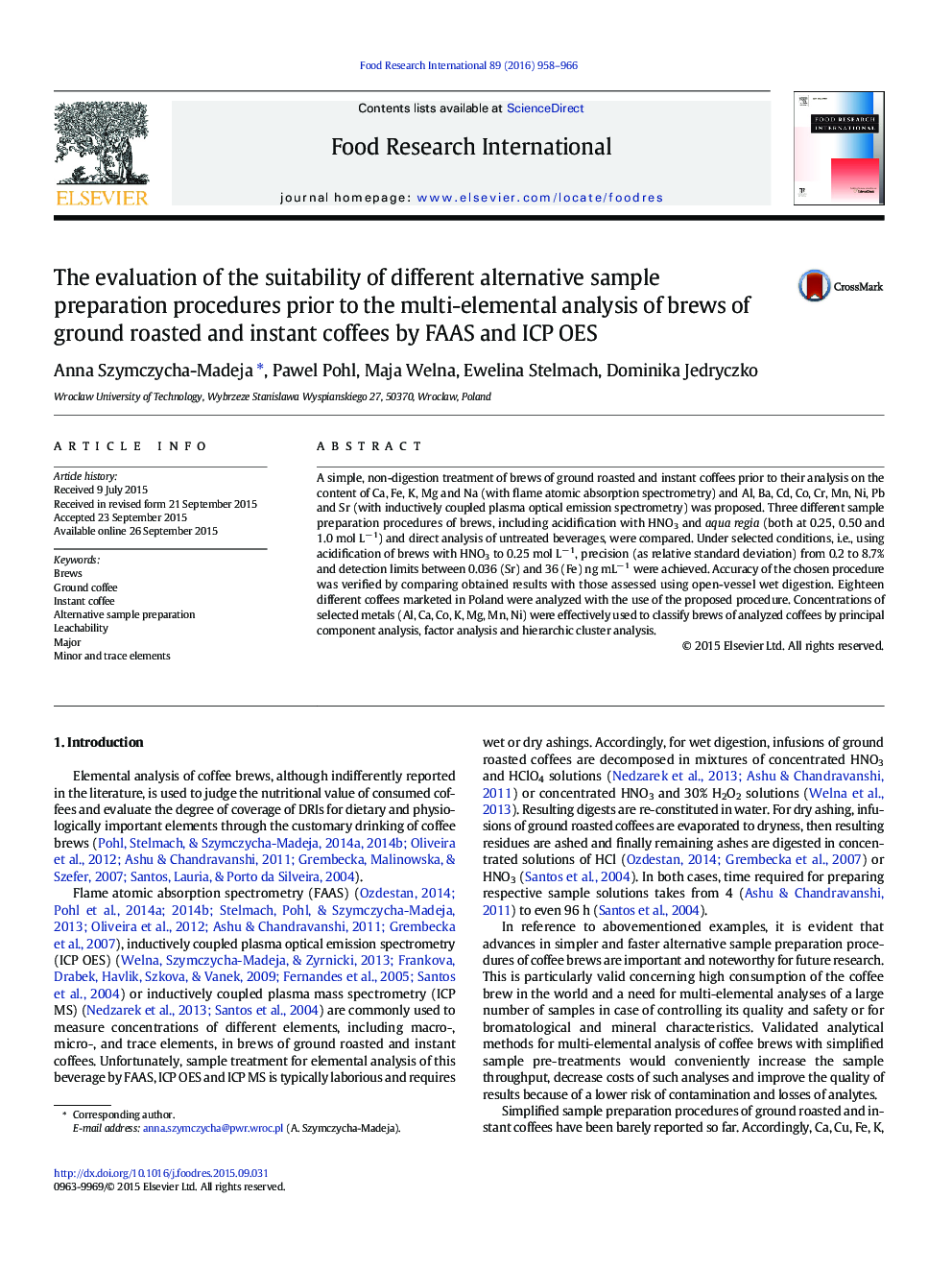| Article ID | Journal | Published Year | Pages | File Type |
|---|---|---|---|---|
| 5768332 | Food Research International | 2016 | 9 Pages |
â¢Four treatments of coffee beverages for ICP OES and FAAS analysis were tested.â¢Acidification with HNO3 was proposed as reliable sample preparation procedure.â¢Analytical characteristic of sample preparation procedure was evaluated.â¢14 elements were determined in brews of 18 coffees.â¢PCA and HCA were used for grouping coffee beverages.
A simple, non-digestion treatment of brews of ground roasted and instant coffees prior to their analysis on the content of Ca, Fe, K, Mg and Na (with flame atomic absorption spectrometry) and Al, Ba, Cd, Co, Cr, Mn, Ni, Pb and Sr (with inductively coupled plasma optical emission spectrometry) was proposed. Three different sample preparation procedures of brews, including acidification with HNO3 and aqua regia (both at 0.25, 0.50 and 1.0 mol Lâ 1) and direct analysis of untreated beverages, were compared. Under selected conditions, i.e., using acidification of brews with HNO3 to 0.25 mol Lâ 1, precision (as relative standard deviation) from 0.2 to 8.7% and detection limits between 0.036 (Sr) and 36 (Fe) ng mLâ 1 were achieved. Accuracy of the chosen procedure was verified by comparing obtained results with those assessed using open-vessel wet digestion. Eighteen different coffees marketed in Poland were analyzed with the use of the proposed procedure. Concentrations of selected metals (Al, Ca, Co, K, Mg, Mn, Ni) were effectively used to classify brews of analyzed coffees by principal component analysis, factor analysis and hierarchic cluster analysis.
